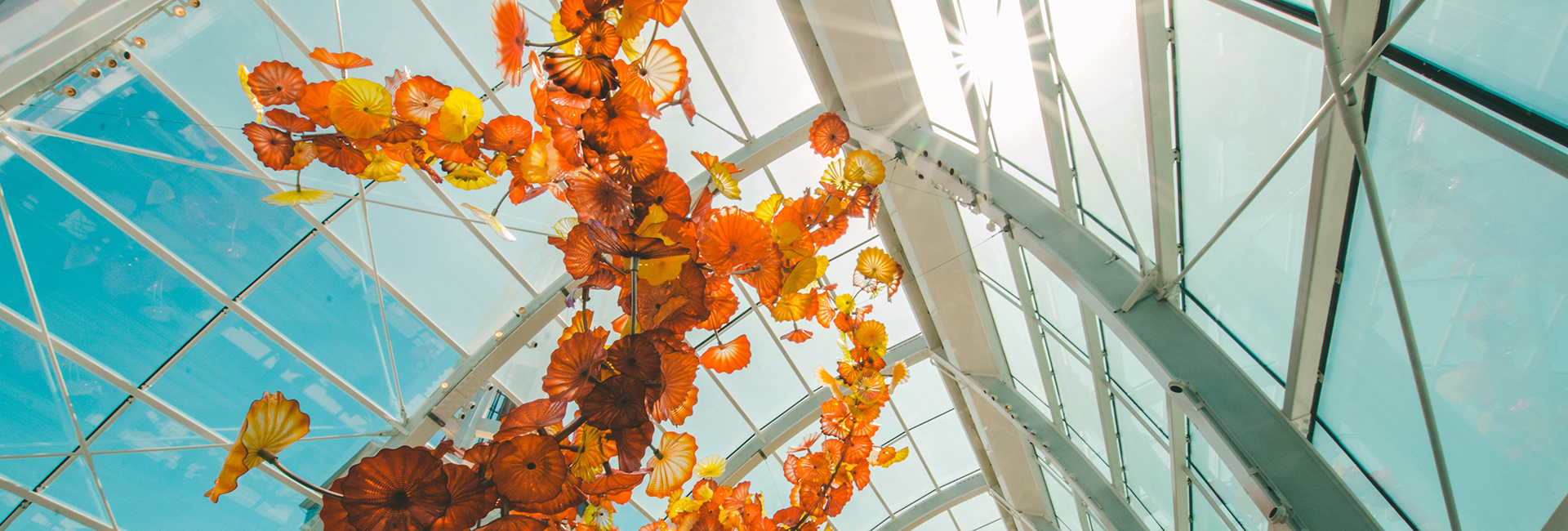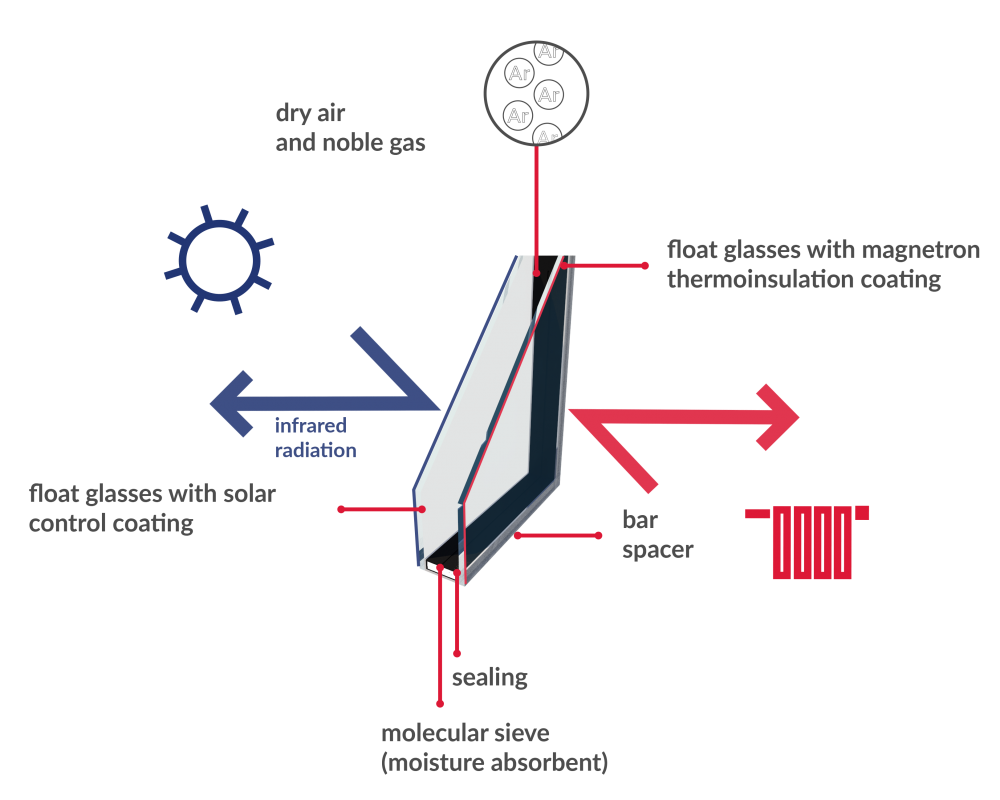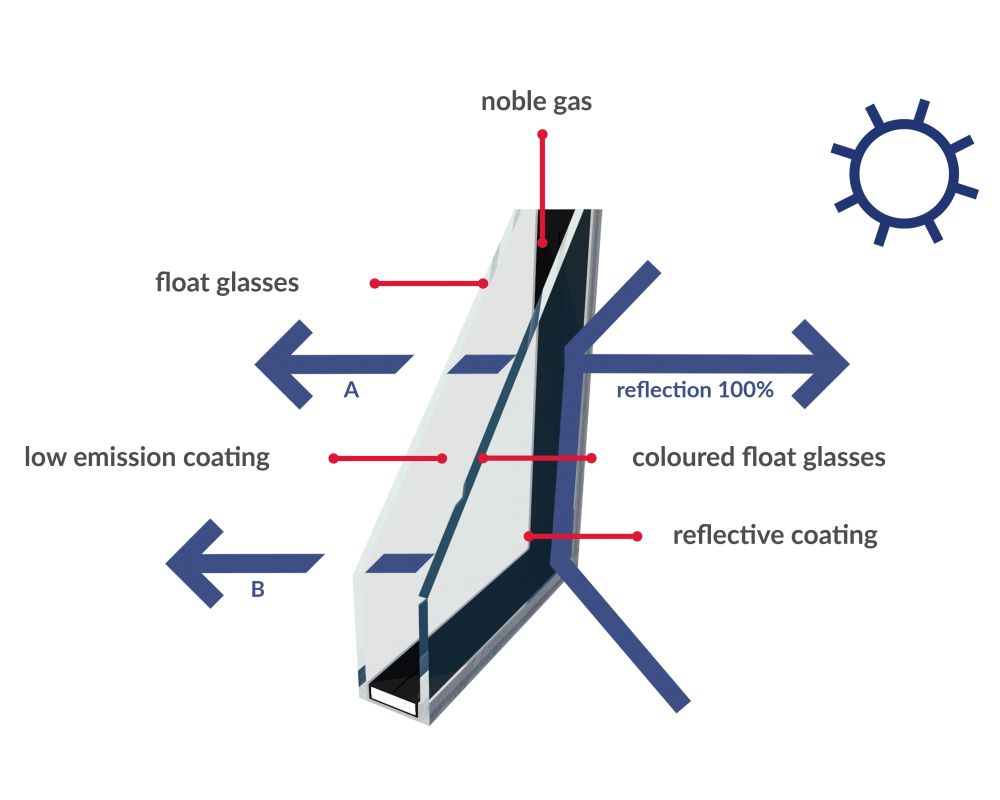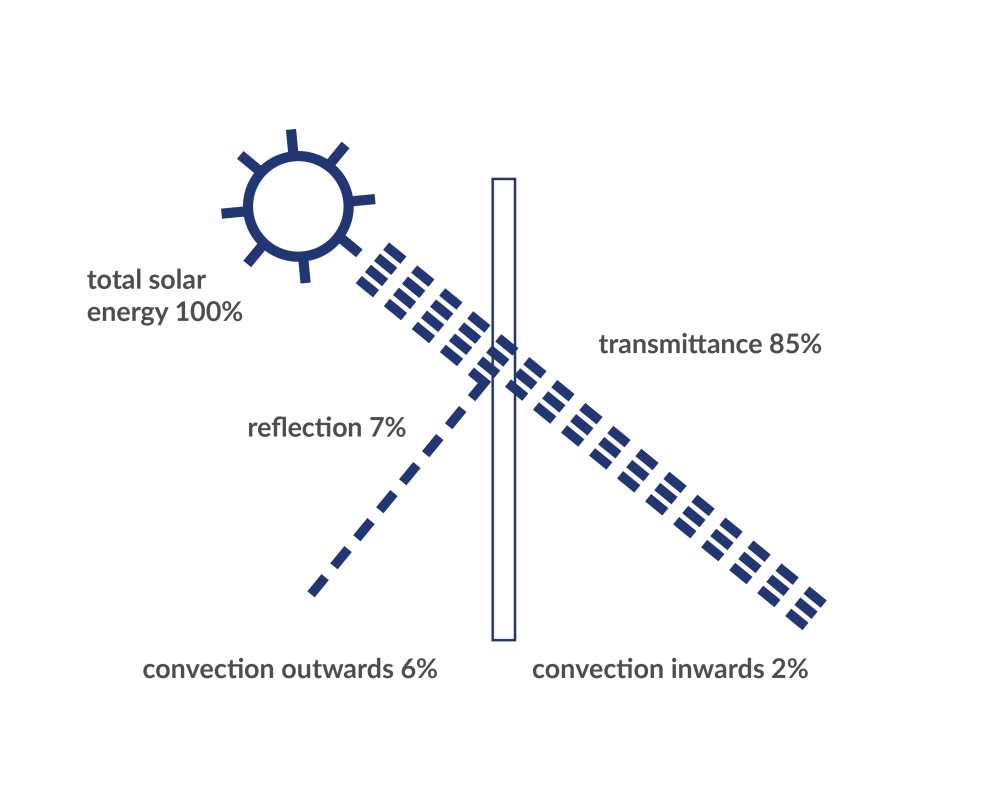
The architects constantly search for the new forms and materials for the elevations, and in the contemporary architecture glass found its usage for an unprecedented scale. The houses, offices, public utility buildings are fulfilled with the light, but a high degree of the glass transparency may lead to warming up the premises and a high transmittance of the UV rays. In order to avoid it, the architects need the modern solutions within a scope of the glass properties assembled in the elevations, and a response to these postulates are the solar control glasses of the Effector brand.
In the above-mentioned glasses are used the glasses produced by spraying the metal or metal oxide layers, what enables to obtain an ultrathin coating, which gives a homogenous appearance and the highest optic quality.


The architects constantly search for the new forms and materials for the elevations, and in the contemporary architecture glass found its usage for an unprecedented scale. The houses, offices, public utility buildings are fulfilled with the light, but a high degree of the glass transparency may lead to warming up the premises and a high transmittance of the UV rays. In order to avoid it, the architects need the modern solutions within a scope of the glass properties assembled in the elevations, and a response to these postulates are the solar control glasses of the Effector brand.
In the above-mentioned glasses are used the glasses produced by spraying the metal or metal oxide layers, what enables to obtain an ultrathin coating, which gives a homogenous appearance and the highest optic quality.
Advantages of the solar control glasses by the Effector brand:
- a freedom of use – in the architectural and technical terms,
- a reduction of the operational costs, especially in the industrial buildings, thanks to lowering the expenditures connected with cooling,
- a higher level of comfort of the used premises, friendly temperatures, even in summer,
- the solar control glasses withhold circa 50 – 76 % of the solar energy, therefore you may achieve the excellent properties related to a protection against the Sun.
Due to their appearance, a manner of manufacturing and an impact on the solar radiation reduction, the solar control glasses are divided into three groups: absorptive, reflexive and selective.
What are the absortive glasses?
Absorptive glasses, otherwise known as antisol. They absorb part of the solar energy and (in this way) they protect the room from overheating. They are made of float glass stained in mass. Light transmittance decreases to the level – from 32 to 72%, depending on the thickness and color of the glass: gray, brown, blue and green are available.
It is worth remembering that colored glass does not affect the attractiveness of the facade, but it also acts as a color filter and greatly affects the appearance of the interior.
It is a basic solution, used in the solar control glasses. The absorptive glass is coloured in mass during a melting process executed in the foundry. The blue, brown, graphite or green colour results in a strong absorption of the respective part of the spectrum. This glass warms up heavily due to the absorption phenomenon, absorbing circa 50% of the solar radiation energy, and then dissipated energy directing it again outwards. They are used as the external glass in a set of the glazed unit. They are characterised by a low degree of the light reflection, a slightly lower than a transparent float glass. Depending on the needs, related to achieving a desired energy balance for the entire glazing, it is selected both the colour, and the thickness of the glass (effect of the absorption glass operation increases a s the thickness of the glass increases).
What are the reflexive glasses?
The reflexive glass, called otherwise as the reflex or the stopsol, is a solar control glass, which operates on the basis of another rule. It can be made of the ordinary glass or the glass dyed in mass, but it is additionally coated by metal oxides or noble metals. The other solution is sticking on it the solar control film, which at the same time protects the glass against breaking.


The reflective layer acts as a mirror and reflects part of the solar radiation, not only preventing overheating of rooms, but also (in some way) protecting the house from thieves. It makes it difficult to determine what is happening inside. Additionally, any damage or deviation is visible from afar.
A more advance solution constitutes using in the solar control glasses, the glasses with a reflexive coating. The reflexive coating is put on the glass already during the production stage. It is responsible both for reflexing the visible light spectrum, and the solar energy. Using the reflexive glasses with the different colours, apart from shaping the energy balance, is frequently used to improve the aesthetic values of the building or the surroundings of the building (effect of the mirror image of the surrounding architecture on the elevation).
Both types of the solar control glasses can be nearly freely joined with the other types of the glass. A combination with the low emission glass or the anti-burglary glass in one glazed unit enables to satisfy the expectations of the uses to the very broad extent and develop the multifunctional sets, that effectively protect against the undesired energy exchange in each season of the year.
The selctive glasses, so which glasses?
The selective glass used formerly was easy to identified thanks to its blue shade. Now it is produced as the transparent or dyed in mass for the colours from blue to green. A characteristic distinguishing feature of the selective glass is a presence of argon in the chamber of the glazed unit.
The solar control glass from the selective glass is very popular due to the two-fold better degree of thermal insulation. Now, the selective glass is transparent therefore it can be identified on the basis of the special sensor that reacts to metal oxides on the glass pane. It can be also dyed in mass to blue, brown, grey or green. The multi-coating with metal oxides allows for obtaining the reflexing effect, controlling a level of the sunlight of the premises and restricting a transmittance of the solar energy towards them, as well as fulfils the high level of the thermal control. The chamber of the glazed unit from the selective glass is filled with argon, which improves the thermal insulation properties by circa 20%.
| The galzed units in a set with the low emission glass |
Construction [mm] |
Heat transfer coefficient Ug [W/m2K] |
Sunlight [%] | Solar energy [%] | ||||
|---|---|---|---|---|---|---|---|---|
| Argon | TL | RL | TE | AE | RE | g | ||
| Antelio green #1 | 6-16-6 | 1,1 | 64 | 10 | 32 | 55 | 9 | 39 |
| Stopsol Classic green#1 | 6-16-6 | 1,1 | 27 | 35 | 14 | 54 | 29 | 19 |
| Stopsol Classic green#2 | 6-16-6 | 1,1 | 28 | 20 | 15 | 71 | 12 | 20 |
| Antisol brown | 6-16-6 | 1,1 | 44 | 7 | 32 | 50 | 13 | 39 |
| Stopsol Classic brown#1 | 6-16-6 | 1,1 | 19 | 34 | 16 | 48 | 33 | 21 |
| Stopsol Classic brown#2 | 6-16-6 | 1,1 | 19 | 12 | 17 | 64 | 16 | 23 |
| Antisol blue (Priva blue) | 6-16-6 | 1,1 | 30 | 6 | 16 | 77 | 5 | 21 |
| Stopsol Supersilver Dark Blue#1 | 6-16-6 | 1,1 | 35 | 35 | 20 | 48 | 28 | 25 |
| Stopsol Supersilver Dark Blue#2 | 6-16-6 | 1,1 | 36 | 18 | 21 | 62 | 14 | 26 |
| Antisol grey - graphite | 6-16-6 | 1,1 | 39 | 6 | 29 | 60 | 11 | 36 |
| Stopsol Classic grey - graphite#1 | 6-16-6 | 1,1 | 16 | 34 | 15 | 50 | 32 | 20 |
| Stopsol Classic grey - graphite#2 | 6-16-6 | 1,1 | 17 | 10 | 15 | 68 | 14 | 21 |
| Antelio clear#1 | 6-16-6 | 1,1 | 42 | 33 | 34 | 23 | 39 | 39 |
| Antelio clear#2 | 6-16-6 | 1,1 | 42 | 28 | 34 | 27 | 34 | 39 |
| Stopsol Supersilver clear#1 | 6-16-6 | 1,1 | 55 | 38 | 40 | 12 | 40 | 47 |
| Stopsol Supersilver clear#2 | 6-16-6 | 1,1 | 56 | 36 | 40 | 15 | 37 | 47 |
| Silverstar Combi Neutral 70/35 #2 | 6-16-6 | 1,0 | 70 | 13 | 35 | 27 | 37 | 37 |
| SunGuard Super Neutral 70S #2 | 6-16-6 | 1,0 | 70 | 11 | 34 | 33 | 33 | 37 |
| Cool Lite SKN 176 #2 | 6-16-6 | 1,0 | 70 | 14 | 34 | 33 | 33 | 37 |